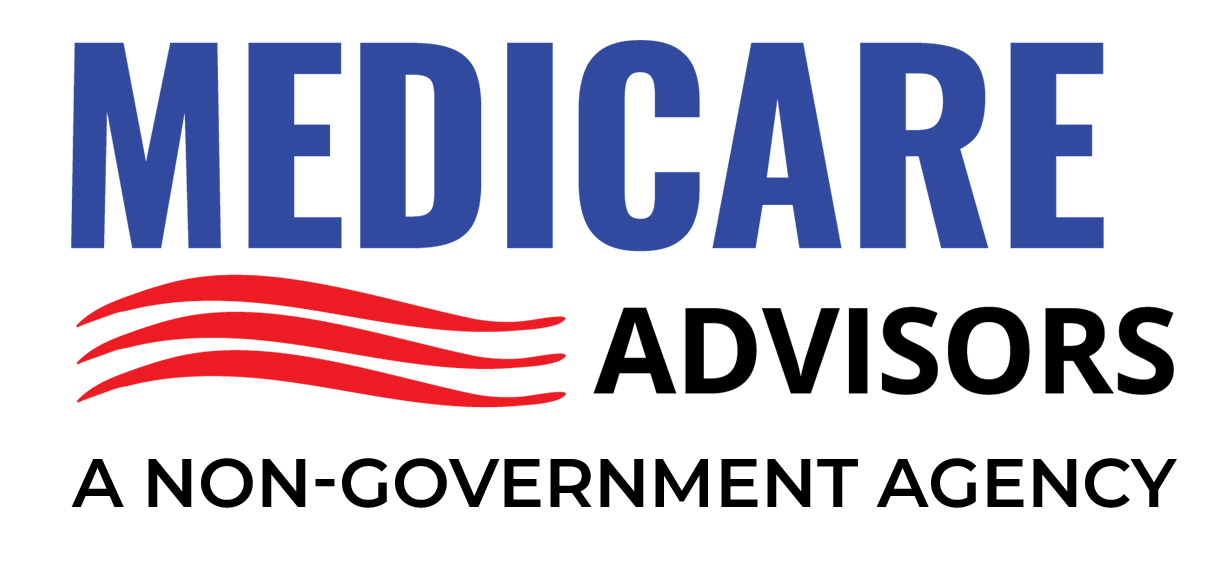When it comes to managing your healthcare costs in retirement, one of the biggest challenges can be deciphering the complex world of Medicare. Many beneficiaries realize that while Original Medicare (Part A and Part B) provides a strong foundation, it does not always cover everything—leaving gaps that can result in significant out-of-pocket expenses. That’s where Medicare Supplement Plans, also known as Medigap plans, come into play. Among the 10 standardized Medigap offerings (Plans A, B, C, D, F, G, K, L, M, and N), Medicare Supplement Plan K stands out for its unique cost-sharing structure and its annual out-of-pocket limit.
In this detailed article, we’ll break down Medicare Supplement Plan K from top to bottom. Whether you’re new to Medicare or you’re considering switching from another Medigap plan, this guide will help you understand what Plan K offers, how it works, and whether it might be the right choice for your healthcare needs.
Understanding Medicare Supplement Plans
Before diving specifically into Medicare Supplement Plan K, it’s helpful to understand the broader context of Medigap. These policies:
- Are sold by private insurance companies to complement Original Medicare (Part A and Part B).
- Help cover specific gaps such as deductibles, coinsurance, and copays, depending on the plan.
- Are standardized in most states (except Massachusetts, Minnesota, and Wisconsin, which have their own standardized versions).
- Allow you to see any doctor nationwide who accepts Medicare, bypassing the restrictions often found in Medicare Advantage (Part C) plans with network limitations.
One of the core reasons people opt for a Medigap policy is predictability: Original Medicare leaves you vulnerable to open-ended cost-sharing. In some cases, serious illnesses or prolonged hospital stays can result in large out-of-pocket bills. A Medigap policy aims to minimize financial surprises by covering all or part of these costs—depending on the plan type.
Find Medicare Plans in 3 Easy Steps
We can help get up to $0 monthly premium Medicare plans
What Is Medicare Supplement Plan K?
Medicare Supplement Plan K is one of the lesser-known Medigap options but can be quite valuable for beneficiaries looking to balance premiums with out-of-pocket costs. It offers partial coverage for several key expenses left behind by Original Medicare. Unlike the more robust Plans F or G, Plan K requires you to share in a portion (50%) of certain costs until you hit an annual out-of-pocket limit.
Plan K is standardized just like other Medigap plans, so the coverage you get from one insurance company will be the same as what you’d get from another. The primary differences between insurers are price, availability, and customer service reputation.
Coverage Details: What Does Plan K Pay For?
While Plan K does not pay 100% for many items (like some other Medigap policies), it does offer coverage on a variety of services. Below is a summarized list of what is covered:
- Part A Hospital Coinsurance and Hospital Costs: Covered at 100%. This includes full coverage for days 61-90 of a hospital stay and beyond.
- Part A Hospice Care Coinsurance or Copayment: Covered at 50%.
- Skilled Nursing Facility (SNF) Coinsurance: Covered at 50%.
- Part A Deductible: Covered at 50%.
- Part B Coinsurance or Copayment: Covered at 50%. (This includes doctor visits, outpatient surgeries, and other medical services.)
- First Three Pints of Blood: Covered at 50%.
What isn’t covered? Plan K does not pay for the Part B deductible (no plans sold to new Medicare beneficiaries after 2020 cover the Part B deductible, except Plans C and F for those eligible before 2020), and it does not cover Part B excess charges. Also, foreign travel emergencies aren’t covered under Plan K, unlike some other Medigap options (e.g., Plans G, M, and N).
Cost-Sharing: The 50% Rule
A defining characteristic of Plan K is the so-called 50% rule. This means you’re responsible for half of certain Medicare costs, such as Part B coinsurance or the Part A deductible, up until you reach the out-of-pocket limit (more on that below).
For instance:
- If you go to the doctor and the Part B coinsurance would normally be $20 under Original Medicare, Plan K pays half ($10), and you pay the other half ($10).
- If you have a hospital stay and are responsible for the Part A deductible, Plan K pays 50% of that deductible.
This cost-sharing approach is how Plan K can have lower monthly premiums compared to plans that offer more comprehensive coverage. Essentially, you assume more responsibility for your healthcare expenses in exchange for paying less each month.
Out-of-Pocket Limit: Your Financial Safety Net
One of the key advantages of Medicare Supplement Plan K (and Plan L) is that it includes an annual out-of-pocket limit. This is a financial “cap” on how much you’ll spend on covered services in a given year.
- 2023 Out-of-Pocket Limit for Plan K: $6,620 (this amount can change annually).
- Once you reach $6,620 in out-of-pocket spending for covered Part A and Part B services, Plan K pays 100% of your covered Medicare costs for the rest of that calendar year.
This limit can serve as a financial safety net. Even though you pay 50% of certain costs up to that point, you won’t face unlimited expenses as you would with Original Medicare alone. This cap can provide significant peace of mind if you anticipate high medical costs in a given year but still want to keep monthly premiums in check.
Find Medicare Plans in 3 Easy Steps
We can help get up to $0 monthly premium Medicare plans
Who Should Consider Medicare Supplement Plan K?
Plan K isn’t for everyone, but it can be a great fit for individuals who:
- Want Lower Monthly Premiums: Because you share 50% of certain costs, the premium for Plan K is typically lower than more comprehensive plans like G or F.
- Prefer a Safety Net: The annual out-of-pocket cap can be reassuring for anyone concerned about worst-case scenarios.
- Are Generally Healthy: If you only see your doctor occasionally or don’t expect frequent hospital stays, you might appreciate the lower monthly cost.
- Value Flexibility: Plan K, like all Medigap plans, allows you to see any provider that accepts Medicare, giving you a wide choice of healthcare providers.
However, if you regularly need specialist visits, have chronic conditions, or take expensive medications, you might face high cost-sharing before hitting the out-of-pocket limit. In that scenario, another plan with more comprehensive coverage (albeit a higher premium) may be more suitable.
Comparing Plan K to Other Medigap Plans
Plan K vs. Plan L
- Both have cost-sharing rules, but Plan L covers 75% of most costs instead of 50%.
- Plan L’s out-of-pocket limit is also lower, which means you reach 100% coverage sooner.
- Plan L generally has a higher monthly premium than Plan K.
Plan K vs. Plan G
- Plan G is one of the most comprehensive Medigap plans available (only Part B deductible remains your responsibility).
- Plan K, by contrast, requires 50% cost-sharing on many items and has an out-of-pocket limit.
- Plan G usually has higher premiums but minimal out-of-pocket expenses throughout the year (once you pay the Part B deductible).
Plan K vs. Medicare Advantage
- Medicare Advantage (Part C) is different in that it replaces Original Medicare with private coverage, often featuring networks of providers (HMOs or PPOs) and includes Part D (prescription drug coverage).
- Plan K is strictly a supplement to Original Medicare. You keep your Original Medicare benefits and add a safety net for cost-sharing.
- Medicare Advantage can offer lower premiums, but typically with provider network restrictions and different cost structures. Plan K maintains the freedom to see any provider nationwide who accepts Medicare.
How Much Does Plan K Typically Cost?
The cost of a Medicare Supplement Plan K policy can vary widely based on several factors:
- Geography: Premiums are typically higher in urban areas with higher living costs.
- Age: Some insurers base rates on age-attained pricing, while others use community-rated or issue-age-rated methods.
- Gender and Tobacco Use: Smokers and men often pay higher premiums than non-smokers and women.
- Insurance Carrier: Each carrier sets their own pricing, so it pays to shop around.
On average, monthly premiums for Plan K can range from around $40 to $90 or more, depending on where you live and your personal circumstances. This range is generally lower than Plans G or F, which can exceed $100 or $150 per month in many regions.
Tip: While comparing prices, it’s essential to weigh the lower premium against potential out-of-pocket costs. If you need frequent medical care, a lower-premium, higher-cost-sharing plan like K might end up costing you more than a higher-premium plan with more robust coverage.
Find Medicare Plans in 3 Easy Steps
We can help get up to $0 monthly premium Medicare plans
Reviews & Real-World Experiences
Because Medicare Supplement Plan K is less common than other Medigap plans, you won’t find as many online testimonials compared to Plan F or G. However, anecdotal reviews from existing Plan K policyholders often highlight:
- Positive:
- Affordability: People with minimal healthcare needs appreciate the low monthly premium.
- Predictability: Having an out-of-pocket limit reassures policyholders that expenses won’t spiral out of control in a worst-case scenario.
- Negative:
- Cost-Sharing Surprises: Some new enrollees don’t fully realize how much 50% of Part B coinsurance can add up if they see multiple providers or need expensive outpatient procedures.
- Misunderstanding Coverage: Some assume Plan K covers everything beyond what Original Medicare offers, only to be surprised by the partial coverage structure.
It’s important to review your own healthcare usage and risk tolerance before enrolling. If you’re not someone who requires frequent doctor visits or specialized care, Plan K’s structure might be ideal. If you do require more frequent healthcare services, you should budget for those 50% copayments until you reach the out-of-pocket cap.
Frequently Asked Questions (FAQ)
Q1: Does Medicare Supplement Plan K cover prescription drugs?
A: No. Like most Medigap plans, Plan K does not include prescription drug coverage. You’ll need to enroll in a separate Medicare Part D plan if you want coverage for outpatient prescription medications.
Q2: Does Plan K cover foreign travel emergencies?
A: No, it does not. Some Medigap plans (like Plans G, M, and N) provide partial coverage for emergency healthcare while traveling abroad, but Plan K is not one of them.
Q3: Does Plan K cover the Part B deductible?
A: No. Actually, no Medigap plan (except those “grandfathered” plans like C and F for individuals eligible before 2020) covers the Part B deductible. You’ll need to pay the standard Part B deductible out of pocket (which is $226 in 2023).
Q4: What’s the difference between Plan K and Plan L?
A: Plan L pays 75% instead of 50% of certain costs and has a lower out-of-pocket limit. Consequently, monthly premiums for Plan L are generally higher than Plan K.
Q5: Do I need to change doctors if I enroll in Plan K?
A: No. Because Medigap plans don’t use provider networks, you can see any doctor nationwide who accepts Medicare.
Q6: Can I switch from Plan K to another Medigap plan later?
A: Possibly. Under federal rules, you can switch, but you may be subject to medical underwriting unless you have a guaranteed issue right (for instance, if you move out of state or your plan terminates). You might be denied coverage or charged higher rates based on your health.
References
- Medicare.gov – Official U.S. Government Site for Medicare
- Choosing a Medigap Policy: A Guide to Health Insurance for People with Medicare – Centers for Medicare & Medicaid Services (CMS)
- State Insurance Department Websites – Check your state’s Department of Insurance for localized premium comparisons and rules.
Final Thoughts
Medicare Supplement Plan K can strike a balance between managing monthly premiums and containing catastrophic health costs through an annual out-of-pocket limit. While you do share in more day-to-day expenses (typically 50% until you reach the cap), this design appeals to beneficiaries who anticipate only moderate medical usage and prefer lower monthly costs.
As you consider whether Plan K is right for you, remember to:
- Assess Your Health Needs: Estimate how often you typically see healthcare providers, what medications you take, and whether you’re expecting any surgeries or hospital stays.
- Compare Plans and Premiums: Obtain quotes from multiple insurers in your state to find the best rate.
- Check Eligibility Windows: The best time to enroll in a Medigap plan is during your Medigap Open Enrollment Period (the six-month window that starts when you’re both 65 and enrolled in Medicare Part B). During this period, you have guaranteed issue rights and cannot be denied coverage due to preexisting conditions.
By taking a thoughtful approach, you’ll be better equipped to decide if Medicare Supplement Plan K aligns with your budget, healthcare preferences, and peace-of-mind needs. And remember, knowledge is your greatest ally in navigating Medicare’s complexities—so never hesitate to ask questions of licensed insurance agents, state health insurance counseling agencies, or consult reputable sources like Medicare.gov and the Centers for Medicare & Medicaid Services.





